- Home
- TV History
- Network Studios History
- Cameras
- Archives
- Viewseum
- About / Comments
Skip to content
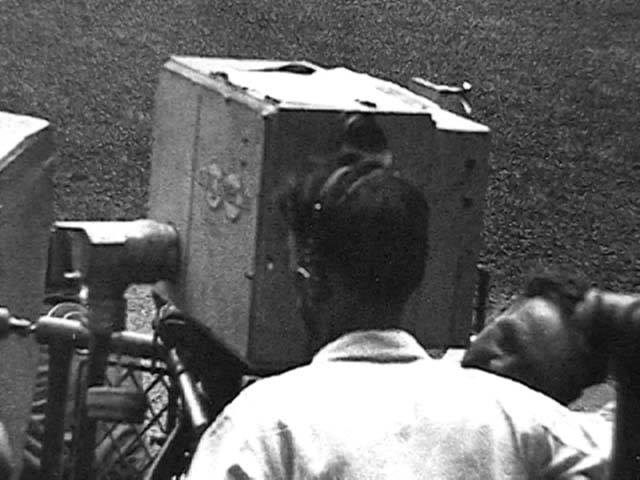









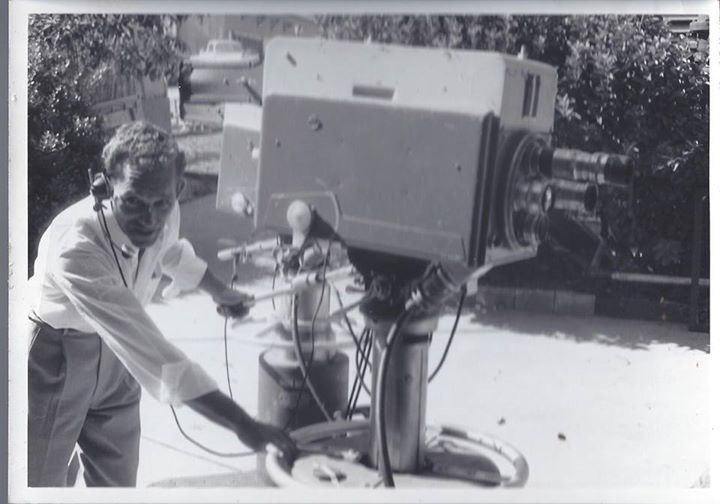

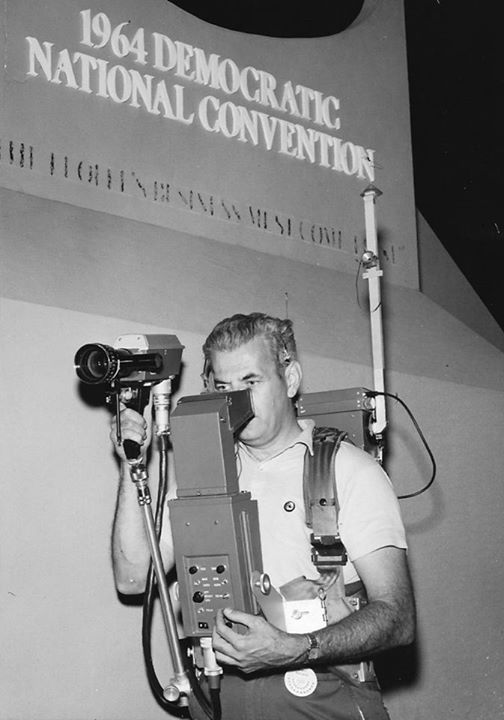



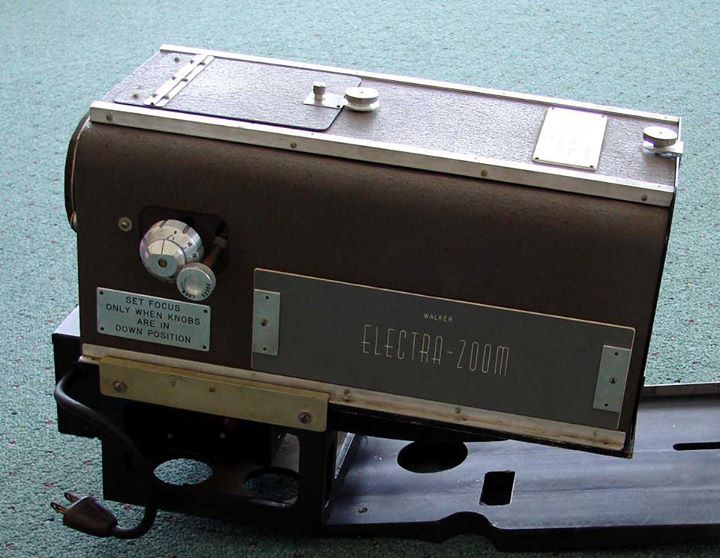

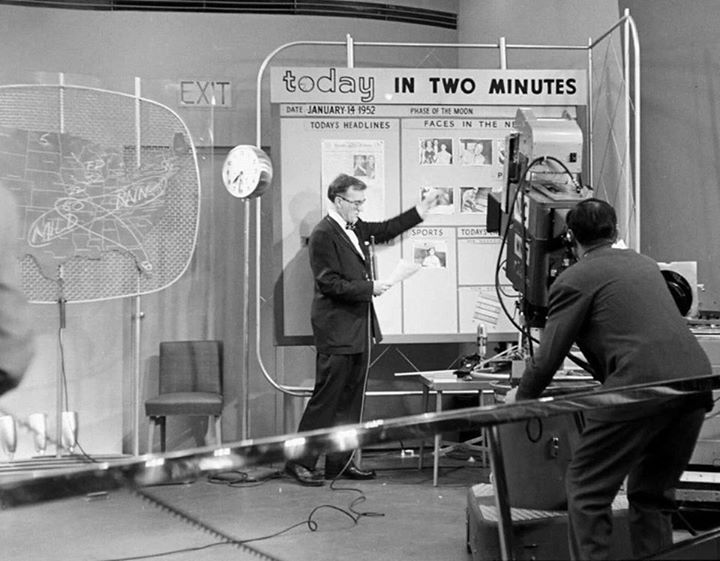



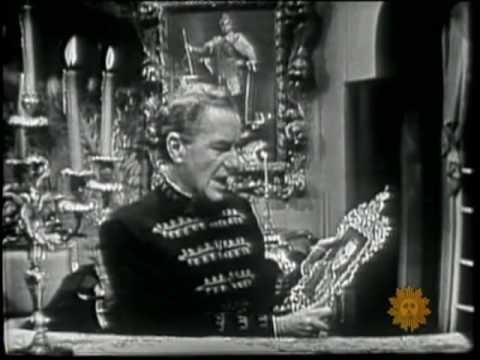

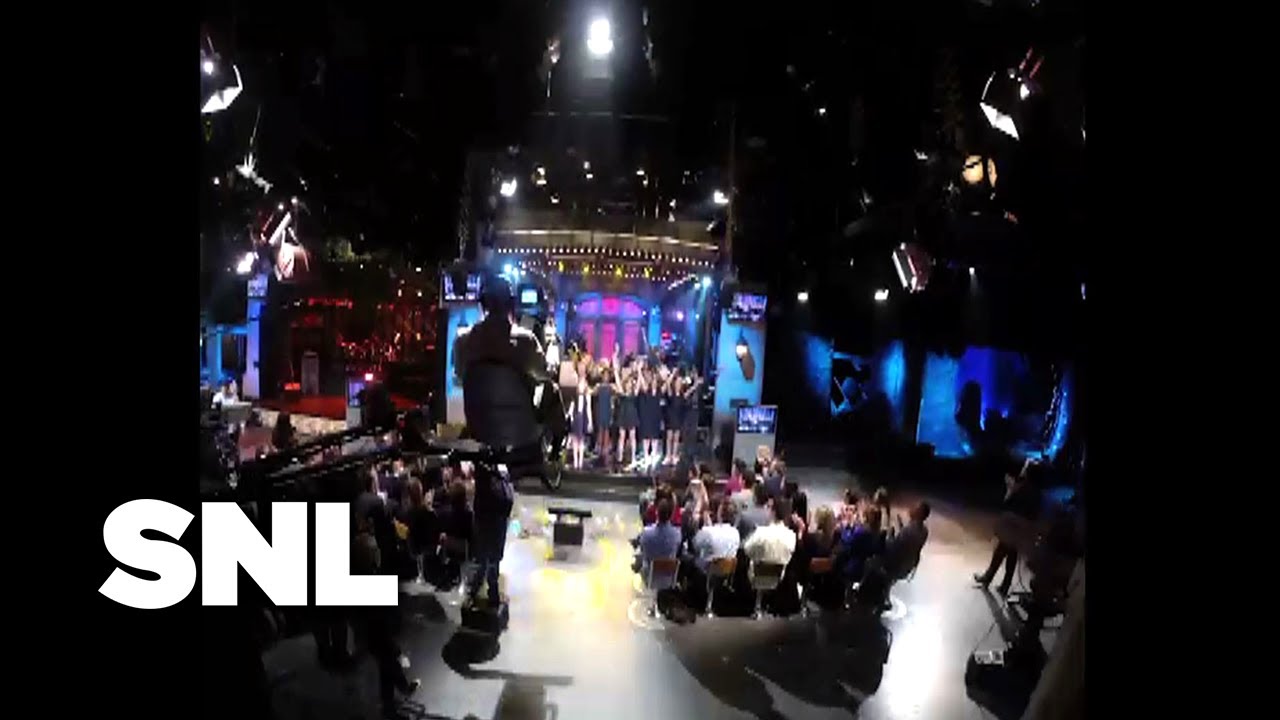













Posts in Category: TV History
Page 64 of 136
« Previous
1
2
3
4
5
6
7
8
9
10
11
12
13
14
15
16
17
18
19
20
21
22
23
24
25
26
27
28
29
30
31
32
33
34
35
36
37
38
39
40
41
42
43
44
45
46
47
48
49
50
51
52
53
54
55
56
57
58
59
60
61
62
63
64
65
66
67
68
69
70
71
72
73
74
75
76
77
78
79
80
81
82
83
84
85
86
87
88
89
90
91
92
93
94
95
96
97
98
99
100
101
102
103
104
105
106
107
108
109
110
111
112
113
114
115
116
117
118
119
120
121
122
123
124
125
126
127
128
129
130
131
132
133
134
135
136
Next » August 26, 1939…Major League Baseball Comes To Television
On August 26, 2014
- TV History
August 26, 1939…Major League Baseball Comes To Television
75 years ago today, the first professional baseball game was televised over NBC’s W2XBS in New York City. The game was between the Cincinnati Red and the Brooklyn Dodgers…the announcer was Red Barber.
Here’s an interesting side note. Realizing the significance of the broadcast, Barber asked NBC to memorialize the event with some sort of memento. A week later, NBC sent Barber a beautiful silver cigarette case with the date and event inscribed on the front. They also sent him the bill for $22.19.
In the photos, we see Barber doing the first ever pre game interview with Dodgers manager Leo Durocher. There were two cameras there. the one you see here on the third base side and one in the press box on the first base side. Barber called the game from the stands sitting by the this camera so he could get instructions from the truck via the cameraman.
Earlier In 1939, RCA designed and built the first mobile television production units ever. There were two telemobile trucks…one contained standard rack-mounted equipment for two cameras and the other housed a 159 megacycle, 300W transmitter with a hinged antenna mast on top of the unit.
Each unit was about the size and shape of a 25-passenger bus and weighed 10 tons. The total power required to operate both units was approximately 20KW. The signal was sent to the transmitter in the Empire State Building.
It must have been a challenge for the sports camera operator to frame a shot. RCA had three Iconoscope camera models…one for studio use and two for the field. The field cameras didn’t have viewfinders. The camera we see here looks like it may have a small eyepiece that would have probably been a metal tube from the front to the back of the unit. The other field model (with a rounded back) had a foldout wire frame viewfinder on the left side of the camera, similar to still photography cameras of the time.
Intercom equipment was new as well. The mic was a contraption that had a small curved horn for a mouthpiece and was worn on the chest which was borrowed from the telephone company. The headsets were borrowed from radio and it really was appropriate to call them “cans” because the round metal earpieces didn’t begin to approach the quality of today’s headsets. By the way, the Reds won that day.
Enjoy and share! – Bobby Ellerbee
Apollo Missions Television…The On Board Camera Systems
On August 26, 2014
- TV History
Apollo Missions Television…The On Board Camera Systems
This is a remarkable 45 page article packed with photos many of us have never seen. This is the most in depth report on all of the television apparatus used on the Apollo Moon missions that you will find anywhere. I was fortunate to stumble across this while researching the RCA Astro Electronics camera.
Enjoy and share! – Bobby Ellerbee
RCA’s First Color Portable…Sort Of
On August 26, 2014
- TV History
Although not a product of the RCA Broadcast Electronics Division, this portable color mini camera, as it turns out, was developed by RCA’s Astro Electronics Division.
The Astro Electronics Division of RCA was formed in 1958 and was responsible for building SCORE…the world’s first communications satellite, five years before Telstar. Project SCORE (Signal Communications by Orbiting Relay Equipment) was launched on December 18, 1958, and placed the United States at an even technological par with the Soviet Union as a highly functional response to the Sputnik satellites.
It captured world attention by broadcasting a Christmas message via shortwave radio from President Dwight D. Eisenhower through an on-board tape recorder.
At the link above you can hear the message on a WBAI Radio newscast. The first transmitted message from space to Earth was:
“This is the President of the United States speaking. Through the marvels of scientific advance, my voice is coming to you from a satellite circling in outer space. My message is a simple one… through this unique means I convey to you and to all mankind, America’s wish for peace on Earth and goodwill toward men everywhere.”
This camera was developed in 1967 for use on the moon missions. It used three 25 mm vidicon tubes, the same electrostatic types used in the RCA TK-27 film chain cameras to reduce power consumption.
This caption, and the text blocks below are from a 1967
“RCA Engineer” magazine article. The photo caption reads: “An engineer at the RCA Astro-Electronics Division, Princeton N.J., exits from a space simulation chamber carrying the smallest compatible color television camera ever developed. Designed by RCA for use in space exploration and related aerospace ground support activities.”
Thanks to our friend Jay Ballard for pointing us in the right direction.
Enjoy and share! – Bobby Ellerbee


August 26 – August 29, 1968…Chicago Convention Riots
On August 25, 2014
- TV History
August 26 – August 29, 1968…Chicago Convention Riots
To go a bit deeper into a story I posted here earlier today on the NBC color mini cameras…here are some of the unforgettable images from that gathering 46 years ago this week. I watched this all live as a 17 year old. Where were you?
At the clip liked below, you can see Dan Rather’s manhandling as it was broadcast on CBS, but first let me comment on the embedded clip from NBC.
We start with John Chancellor on the floor reporting on the ejection of a delegate and at times, you can see Dan Rather on the right side of the screen trying to get to the action. At 3:30, things get more intense at uniformed police are brought in. At 4:30 we can see a CBS Norelco PCP 70 on the scene. At 5:00, Chancellor is joined by Edwin Newman and at 6:40 we can see the NBC color camera shooting them. At 7:00 we go outside the hall to the riots in the streets. All three networks were using Norelco PC 60s and 70s as stationary cameras.
By the way, this was not the first time television newsmen were in peril at the political conventions. John Chancellor was arrested in 1964 at the Republican conventions for blocking the aisle with an interview. At the 1:55 mark on this NBC tribute to him, you can see that footage. https://www.youtube.com/watch?v=6TI1RW_9G7Q
Enjoy and share! – Bobby Ellerbee
Coverage from inside and outside the 1968 Democratic National Convention in Chicago.
Ultra Rare! NBC’s Very First Mini Camera…1950
On August 25, 2014
- TV History
Ultra Rare! NBC’s Very First Mini Camera…1950
Although RCA and NBC engineers worked together on needed projects, NBC’s engineers were years ahead of RCA’s, in determining what new equipment was needed.
RCA did have a mini camera in development at the time, NBC had one too. The NBC version was the round one you see above and the RCA was the square one. I think both used Vidicon tubes. The first known use of the RCA “Walkie Looky” was at the 1952 political conventions.
NBC’s engineers also beat RCA to the punch with the first Image Orthicon turret camera…the NBC ND 8G cameras. Below you see Milton Berle staring into the lens of one. These were built in late 1945 and were the first cameras used in Studio 8G as early as May 9, 1946…several months before the first RCA TK30s arrived.
In fairness, RCA did have more developmental hoops to jump through, but in retrospect. I think there were a lot of things they could have done faster and better. Ampex ate their lunch on videotape, the TK60s and TK42s were a mess and Norelco and Ikegami were light years ahead with their color portable cameras. Even Marconi had a tiltable viewfinder on their version of the TK41. What took so long?
Enjoy and share! – Bobby Ellerbee
It’s Alive! This RCA TK30 Is Making Pictures Again!
On August 25, 2014
- TV History
It’s Alive! This RCA TK30 Is Making Pictures Again!
I’d heard that Ralph Sargent in Los Angeles had been working on restoring a TK30 and finally we have pictures and the story from Ralph as he told it on the Videokarma site. Thanks to our friend John Bolin for sending this along. Here’s what Ralph wrote….
“As some of you may know, I have been working on a “secret” project since February. The project is now pretty much complete and it’s time to let you in on it. Project: The resuscitation and restoration of a 1946-47 image orthicon camera.
Here are the 1st pictures of TK-30A, serial #101 making TV pictures for the first time since the end of 1966! These were taken in my office today and I haven’t retouched anything. What you see is what I saw. (The slightly greenish cast is from the florescent lamps in the workspace.)
The turret has on it 2 – 135mm lenses and 1 – 90mm. The black hole is actually black masking tape so I can cap the tube in that I don’t have a legit cap. I think I’ve gotten the alignment fairly close and the results are starting to look pretty sharp.
The camera was owned by CBS-NY and had the usual Stanton-decreed, “Get those RCA insignia and so forth off my cameras and paint ’em all grey!” Fact was that when I got the cameras they were painted a sort of bilious green which I had to strip off of everything and repaint. Same was true of the CCU and PS.
The pictures are from my office windows looking across the street at a new condominium being built there.
The reason for the 8 inch modern monitor on the top of the CCU is that the CCU CRT has pretty severe linearity problems that I have yet to figure out. I’ve got to poke into this next week.
Notice the digital meter to the extreme left of the CCU in picture #5. This gives me instant numbers for the AC voltage and current. Was handy for starting this up for the first time and knowing that it wasn’t about to blowup. Helps build confidence. (Notice this gear is pulling about 8.5 Amps @ 116 vac. Less than I thought it would be!)
As far as the number of components replaced: I replaced all of the caps with the exception of a few micas. Overall this was a rather expensive project given that the .05 mfd/ 7kv caps cost about $80 each and the oil 0.5 mfd/1500v was $148.00. I’ve replaced very few resistors except the bleeder chain in the viewfinder which had gone skyward with age. Surprisingly, practically every resistor in this chain is 5% or better and have held their values remarkably well. I’ve ditched a great number of the electrolytic cans as part of the recap to try to improve the airflow throughout the camera. Also, all of the HV wire in the camera had to be replaced because the insulation had rotted. I used the super flexible Alpha wire that John Folsom uses on his CT-100 vertical transformers, but had to buy 100 foot spool at $2.00 a foot!”
ABC’s Sacrificial Lambs…GE PC 7 Made Into First ABC Mini Cam
On August 24, 2014
- Archives, TV History
I was digging through some old photos this morning and came across this and it reminded me to set the record straight on ABC’s first homemade mini cameras that we see in use here on ‘Wide World Of Sports’
A while back I had mentioned that they were made from RCA TK30s, but I had forgotten about this picture from ABC veteran cameraman Don ‘Peaches’ Langford. ABC New York had sent a couple of GE PC 7s to LA, but they had no use for them. The man with the big PC7s is Jim Angel and I’m not sure, but it may have been Angel that built the ABC mini cams using parts from these two GE PC7s.
By the way, Don is the one with the bald wig goofing with the mini cam and doing his impersonation of the cameras regular operator who was “follicly challenged”. Enjoy and share! – Bobby Ellerbee
The NBC Portable Cameras…
On August 24, 2014
- TV History
The NBC Mini Cameras…
Earlier in the week, I posted a video that showed rare footage of ABC’s and CBS’s first self designed, black and white portable cameras.
Here are a couple of NBC’s self designed cameras. The photo in front of the Democratic Convention sign is from 1964 and shows a small camera head with the operator wearing the viewfinder and backpack. That same arrangement carried over into another configuration with a larger, triangular shaped camera.
I don’t know which of these came first as there are no dates on the use of the triangular version, but I think they may have been in use at the same time. Does anyone know?
By the way, the cameraman in two of these shots is Don Mulvaney and the picture with the Iowa placard in the background show Don with RCA’s first portable in 1952. Enjoy and share! – Bobby Ellerbee
An Important First And Last Event…
On August 24, 2014
- TV History
An Important FIrst And Last Event…
Below is a photo of the first television drama to be done in color…it is also the last experimental colorcast.
“To Live In Peace” was the episode title of the December 16, 1953 production of ‘The Kraft Television Theater’ and starred Anne Bancroft. It was done in color from NBC’s Colonial Theater…the night before the FCC announced the approval of the RCA pioneered version of compatible color.
At 5:31 PM, December 17, NBC was the first to broadcast a compatible color signal which was a still shot of the NBC Chimes logo using NTSC standards.
The camera here is one of the original “first four” RCA TK40s. They were hand built and delivered to The Colonial in late October of 1952. Assembly line production did not start till a year later after the the cameras were tested. Enjoy and share! – Bobby Ellerbee
Television’s First Zoom Lens…
On August 23, 2014
- TV History
Television’s First Zoom Lens…
This is the Walker Electra Zoom lens and is believed to be one of the first Joseph Walker made by hand in the late 1940s. Walker worked as a cinematographer with Frank Capra on over twenty films and held almost as many patents on optical and film related inventions.
Over a span of some 40 years, he designed and made special lenses to be used specifically on over 50 of Hollywood’s leading ladies. He had dabbled with this zoom technology in the late 1920s but set it aside until electric motor technology began to catch up.
He sold his invention to RCA and Zeiss around 1949 and RCA kept the name Electra Zoom when they brought it to television. Due to the dominance of Frank Back’s Zoomar lens, Walker’s role in the history of the television zoom lens has been rather overlooked – but there’s little doubt that the Electra Zoom was a significant production tool during the early days of postwar television.
Thanks to Steve Raymer at The Pavek Museum in St Louis Park, MN for sharing the photos of this lens which is on display there at his museum. The lens worked electronically and had a push/pull rod as well for manual operation, much like the Zoomar. You can see that rod in the Hugh Downs photo. Enjoy and share! – Bobby Ellerbee
By the way, the RCA catalog listing is in the Comments section below.
On Closer Examination…Something We All Missed Is Here!
On August 23, 2014
- TV History
On Closer Examination…Something We All Missed Is Here!
Last month, some collector friends and I were trying to put a date on the introduction of the Houston Fearless TD 3 pedestal. We all thought 1954 was probably the year the new lead counterweight pedestal debuted, but low and behold…look at this!
Just this morning, I was looking for photos of the RCA Electra Zoom lens for the next article I’m posting today, but look what I found. At least one TD 3 is in use here on the debut of ‘Today’ on January 14, 1952!
I think this is the prototype in a field test and where better to put it through it’s paces than this new morning show. Notice a silver band just under the lock ring…that’s where the access doors join to the column cover. That was never there on the production models.
We can see the TD 3 in two of these photos and in the third one, we see what the other cameras were mounted on…the old TD 1 crank up model. While you click through these, take a close look at the zoom lens and I’ll have more on that next, and look at that teleprompter. I think that may have been an RCA prototype too. I’ve never seen that anywhere else but here on ‘Today’, have you?
Eyes Of A Generation Camera Collection…
On August 23, 2014
- TV History
Eyes Of A Generation Camera Collection…Part 1 Of 3
A few have recently asked to see my camera collection again, so here are 13 of the 16 cameras I have up and on display here at my home. This is the Camera Room with 3 more spilling into the Florida Room which are not seen here. The 3 you don’t see are in Part 3 and include my RCA TK30 on it’s HF Panoram Dolly. a working Sony BVP 360 camera and chain and a Sony BVP 900. More details on the photos. Enjoy and share! – Bobby Ellerbee
Oh yeah, to see the detailed history on most of these, go here.
https://eyesofageneration.com/camera-collection/
A few have recently asked to see my camera collection again, so here are 13 of the 16 cameras I have up and on display here at my home. This is the main camera room with 3 more spilling into the Florida room which are not seen here. The 3 you don’t see are include my RCA TK30 on it’s HF Panoram Dolly. a working Sony BVP 360 camera and chain and a Sony BVP 900. More details on the photos. Enjoy!


The Story Of ‘The Hallmark Hall Of Fame’…
On August 22, 2014
- TV History
The Story Of ‘The Hallmark Hall Of Fame’…
If you want a story told right, let ‘CBS Sunday Morning’ tell it. From a few years back, here is their look back at one of television’s most watched and awarded programs ever. Did you know that over 25% of all of the Academy Award winners have appeared on Hallmark?
https://www.youtube.com/watch?v=6mCi0c68Mus
For nearly 60 years, the Hallmark Hall of Fame has entertained viewers with award-winning programming. Correspondent Cynthia Bowers takes a look at why its b…


The Most Awesome “Ballet” In All Of Television! SLN Timelapse
Here’s a fantastic 2 minute time lapse look at ‘Saturday Night Live’. This was shot a on April 5 of this year and features Pharrell Williams singing “Happy” and Anna Kendrick as the host. Remember that?
I was there a month later on May 3rd. My seat was on the floor, front row left as you look at this. I can’t even begin to tell you what a joy it was to watch these pros at work! Honest to God, it’s a ballet!
5 pedestal cameras, the Chapman Electra crane and two sound booms all have to move in unison from one end of 8H to the other as the sketches move from stage to stage. All the while, there are 30 or so stagehands striking and setting up scenery all around you. Plus, there are cast members, PAs, Q card and utility men and floor directors in constant motion!
To the crew, the cast and everyone associated with ‘SNL’ I only have 4 words…YOU ROCK! THANK YOU! – Bobby Ellerbee
Marilyn Monroe….’Person To Person’ April 8, 1955
On August 22, 2014
- TV History
Marilyn Monroe….’Person To Person’ April 8, 1955
At the clip above, we start with photographer Milton Green walking through the living room we see in the photos. While he’s walking toward the kitchen where Marilyn is waiting, he is talking live with Edward R. Murrow via the new Shur “Vagabond” wireless microphone.
The Vagabond was the first broadcast quality wireless mic and you can see Marilyn holding the unit in her hand before the CBS technician helps her put hide it under her clothes. What a great gig!
In the second photo, we see a truly rare sight. As she poses with the ‘Person To Person’ crew, there are two new RCA TK11/31s behind them. The rarity is the striped banding around the top. Usually, this was only done with the TK10 and TK30.
In case you don’t know, the banding is actually a very clever grayscale camera chart. Early on, the settings on the black and white cameras tended to drift and some “on the fly” adjustments were needed, but that required a test pattern or grayscale chart. As a quick fix, the CBS NY engineering department came up with these grey and white alternating bands and put them on all their cameras so that all you had to do for a quick alignment was shoot the camera next to you.
This worked well on the TK10s and TK30s because they didn’t have handles like the TK11/31. With the handles in the way, the shot was blocked and effectiveness of this arrangement was diminished. When the new TK11s arrived, they put the banding on but after a few months, stopped adding it, so only a few of the new TK11s were banded and actually, with the new updates onboard, drifting was not as much of a problem as it had been with the older TK10s and 30s.
Enjoy and share! – Bobby Ellerbee
Audrey Meadows…Her Television Debut With ‘Bob & Ray’
On August 22, 2014
- TV History
Audrey Meadows…Her Television Debut With ‘Bob & Ray’
After appearing on the Broadway stage with Phil Silvers in ‘Top Banana’, Audrey and her friend Cloris Leachman each got a casting on NBC’s ‘Bob And Ray’ television show in 1951. At the link above, you’ll see her as Linda Lovely…a recurring role she played on the popular weekly show.
On September 20, 1952, ‘The Jackie Gleason Show’ debuted from CBS Studio 50, or what is now known as The Ed Sullivan Theater. Although Gleason had been doing Honeymooners sketches since late ’51 on Dumont’s ‘Cavalcade Of Stars’ show, Pert Kelton, who had played the part of Alice Kramden, was not a part of the show when it moved to CBS.
Kelton’s husband had been labeled a communist and, by association, she too had wound up on the dreaded “Black List”. A new Alice had to be found, and Meadows went for an audition. Gleason had seen her as Linda Lovely and thought she was good, but too glamorous. Meadows heard about this and a few days later auditioned again under another name but this time, with no makeup and a dressed down look. The rest, as they say, is history.
In this photo below, the production crew at Studio 50 runs over some basics with Meadows a few days before the CBS debut. Among those basics…which lens to look at. The taking lens on the RCA TK30 was the top center. Enjoy and share! – Bobby Ellerbee
‘I’ve Got A Secret’…The 1976 Primetime Fiasco
On August 22, 2014
- TV History
‘I’ve Got A Secret’…The 1976 Primetime Fiasco
In 1976, CBS decided to revive this perennial favorite as a summer replacement in their primetime lineup, and if it did well, they would consider it for a longer run. Unfortunately, it was up against ABC’s wildly popular ‘Happy Days’, and only four episodes aired from June 15 till July 6, 1976. Not even a dead cat bounce in the ratings.
At the link is one of two pilot episodes shot 9 months before the June debut. Both pilots aired and only two other newer episodes were taped in Studio 43 at the CBS Broadcast Center in NY, which we see in this rare photo.
The host was Bill Cullen, who was a long time panelist on the show, and on the new panel was another veteran, Henry Morgan. Richard Dawson, Elaine Joyce and Pat Collins rounded out the rest of the panel. Enjoy and share! – Bobby Ellerbee
On Set Communications 1922 Style
On August 21, 2014
- TV History
On Set Communications 101…
Long before the were intercoms and walkie talkies, there were DBMs…Damn Big Megaphones.
The year is 1922 and the man in the center is Douglas Fairbanks. He is the star of the film being shot here, which is ‘Robin Hood’. The man about to speak into the DBM is Allan Dwan and this is the only way directors could give last minute instructions to casts and crews on this kind of huge outside set. Enjoy and share! – Bobby Ellerbee


On The Road To The Final Four…CBS Sports, 1985
On August 21, 2014
- TV History
On The Road To The Final Four…CBS Sports, 1985
Here’s a short but sweet look at how CBS covered NCAA basketball back in 1985. This was the era of the Thomson cameras on the sports trucks and we’ll get a good look at everything. About half way in, one of the cameramen talks about his dad being a cameraman on ‘The Ed Sullivan Show’…anyone know who that is? Enjoy and share!
https://www.youtube.com/watch?v=Qf1F_YLtp4c
From CBS, the sports segment of a film for affiliates showing behind the scenes of the CBS Television Network. You see the heads of the divisions, talent and…


MUST SEE! A True Genesis Moment In Visual Comedy!
On August 21, 2014
- TV History
MUST SEE! A True Genesis Moment In Visual Comedy!
What you are about to see is the seed that grew into a forest. This single clip has been cited by Ernie Kovacs, Sid Caesar, Mel Brooks, Rowan & Martin and Monty Python as the root of the comedic arts taking on the very medium by which it is being relayed.
Here, the “fourth wall” is not only broken, but gleefully demolished by a comedy team that few in our generation have ever heard of… Olsen And Johnson.
It’s near impossible to describe what happens here, so you’ll have to watch it, and you be glad you did because this is the first time in the history of moving images that this has been done…and it’s done quite well given the technology of the time. Among other firsts you’ll see here, this could also be the first “move within a movie” overlay of characters “off screen” talking to characters “on screen”.
This is from the film ‘Hellzapoppin’ from 1941, which was based on the long running Broadway play of the same name that starred Olson and Johnson. They wrote the play and are legendary for their volume and range of material. They were famous from the 1920s through the early 50s, but having played more on vaudeville and broadway stages, their legacy is not a lasting as their contemporaries, like Laurel And Hardy or The Marx Brothers who were mostly film stars.
The setup for the brilliant technical manipulations of the film begins with The Three Stooges own Shemp Howard playing the part of a projectionist having a fight. The premise is that this is happening in the very theater that each audience is seeing this movie. This has the effect of taking the audience out of spectator mode and making them participants in the experience.
The consequences of the disturbance in the projection room are played out on the big screen in a way no one had ever seen before and a lot of gags from the film spilled over into the Warner Brothers cartoons of the era. I have yet to see the entire film, but after seeing this, I can’t wait! Enjoy and SHARE! – Bobby Ellerbee
https://www.youtube.com/watch?v=ouLlA6IQZGI
[From “Kovacs Corner” on YouTube.com] – Returning to what I believe was a great influence on Ernie Kovacs’ comedic style is the zany 1941 film “Hellzapoppin’…
Page 64 of 136
« Previous
1
2
3
4
5
6
7
8
9
10
11
12
13
14
15
16
17
18
19
20
21
22
23
24
25
26
27
28
29
30
31
32
33
34
35
36
37
38
39
40
41
42
43
44
45
46
47
48
49
50
51
52
53
54
55
56
57
58
59
60
61
62
63
64
65
66
67
68
69
70
71
72
73
74
75
76
77
78
79
80
81
82
83
84
85
86
87
88
89
90
91
92
93
94
95
96
97
98
99
100
101
102
103
104
105
106
107
108
109
110
111
112
113
114
115
116
117
118
119
120
121
122
123
124
125
126
127
128
129
130
131
132
133
134
135
136
Next »